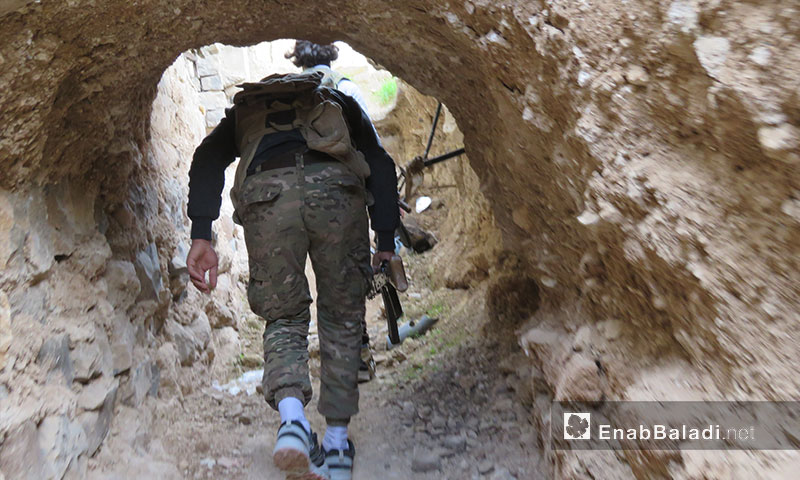The cities and towns in the northern countryside of Homs are anticipating the conditions that will take hold of the area in the upcoming days, after Assad’s forces and their ally militias have finalized the battles in Eastern Ghouta, amidst talks about intentions to move towards other fronts to continue imposing their control over the strategic areas under the opposition factions.
The target here is the cities in northern Homs, as it is the only obstacle that is keeping the Syrian regime from the middle area and blocking its major artery represented by the International Damascus-Aleppo Highway, which places the area on the Russian backed Assad’s forces future list of targets.
The latest developments that the area witnessed confirm its status as a target, for the Russians have, the last month, informed the committee responsible for the area of the end of the “de-escalation” agreement, which have been signed in August 2017. Russians have placed the committee in front of two options, either to negotiate with the Syrian regime or to enter a new military confrontation that disregards all the previous agreements.
Negotiations to Open the Highway
In correspondence with the Ghouta’s fighters’ departure to Northern Syria, informed sources (who wish to be anonymous) told Enab Baladi that negotiations are being conducted in the Safir Hotel in the city of Homs, run by a delegation from the city of Talbiseh and a Syrian regime affiliate officer from the city of al-Rastan.
The sources added that the situation is currently heading to form a committee from the city of al-Rastan to indulge it in the negotiations that provide for opening the international highway and admitting Chechen forces to monitor the area.
The committees that are negotiating with the regime, in the meantime, are not related to the “Negotiations Committee” which talked about Northern Homs in the past a few months.
The “Negotiations Committee,” since the beginning of 2018, has been facing Russian pressure to meet with the Syrian regime, a few days before the end of the “de-escalation” agreement, which includes the area.
According to the sources, the current negotiations provide for an abstinence from surrendering the weapons of the factions that are performing in rural Homs, and the legalization of both civilians and fighters’ status, preserving the military state and keeping opposition and the regime’s concentration points.
Media sources from rural Homs told Enab Baladi that a state of fear reigns over the people in northern Homs after the “fall” of large areas in eastern Ghouta and especially after pro-regime sources have pointed out to Assad’s forces’ preparations to storm the northern countryside of Homs after Ghouta.
A Proactive Step
A few days have passed since the negotiations have addressed opening the highway, during which the military factions in the northern countryside of Homs have formed a unified leadership and an advisory council as a proactive step for any military action on the part of Assad’s forces and their ally militias.
On March 30, military sources informed Enab Baladi that the countryside of Homs and Hama have joined and agreed to form a supreme military command for the middle area and an advisory council.
The joint military factions are the “Fourth Legion, Sham Legion, Harakat Tahrir al-Watan, Jaysh al-Izza, Homs Army and Houla operations Room.”
Enab Baladi has interviewed the spokesperson of “Harakat Tahrir al-Watan”, Suhaib al-Ali, who said that the project came up to unify the decision and enhance the fronts, as well as to block the regime’s route to the area and to abort its plans.
“The door is open to all military factions to enter this unified work,” he added.
Social media observers believe that Assad’s forces might shift to the northern countryside of Homs after getting done with the military operations in Ghouta, exploiting the grand siege it is witnessing and the distance that separates it from the other opposition factions.











